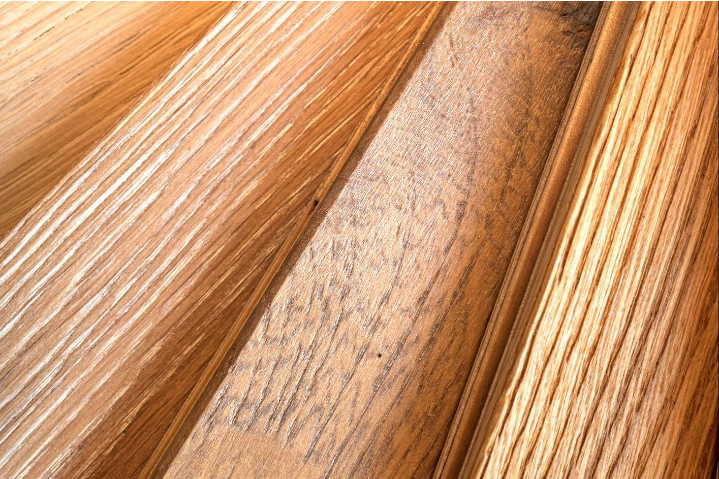what is wood on wood veneer ?
“Wood on wood veneer” typically refers to a specific type of veneer application in woodworking where a thin layer of wood veneer is adhered to a substrate or base material that is also made of wood. This technique is commonly used in furniture making and cabinetry to achieve the appearance of solid wood while using less expensive or less precious wood for the substrate.


Here’s a breakdown of the key components of “wood on wood veneer”:
- Wood Veneer: Wood veneer is a thin slice of real wood, typically ranging from 1/32 to 1/16 of an inch in thickness. Veneer is sliced or peeled from a log or wood block and is used to cover the surface of a substrate to mimic the look of solid wood. Wood veneer is valued for its natural grain patterns and aesthetics.
- Substrate or Base Material: In “wood on wood veneer” applications, the substrate or base material is also made of wood. This underlying wood provides structural support to the veneered surface. Common substrates include plywood, particleboard (MDF or medium-density fiberboard), or hardwood lumber. The choice of substrate can affect the overall strength and cost of the finished piece.
The process of applying wood veneer to a wooden substrate involves using adhesive to bond the veneer to the surface. Veneer can be applied in various ways, such as using glue, heat, or pressure, depending on the specific project and the equipment available.
Benefits of “Wood on Wood Veneer”:
- Cost-Effective: Using wood veneer on a wooden substrate allows for cost savings compared to using solid wood for the entire piece. Veneer can provide the appearance of expensive or exotic wood species without the same high material costs.
- Stability: By using a stable wooden substrate, the potential for warping, splitting, or other issues common with solid wood is reduced. The substrate provides structural integrity and minimizes the risk of wood movement.
- Aesthetic Flexibility: Wood veneer offers a wide range of grain patterns, colors, and species options, allowing for greater design flexibility and the ability to create custom looks.
- Sustainability: Veneer allows for the efficient use of wood resources because it enables the creation of more surfaces from a single log or block. This can be more environmentally friendly compared to using solid wood for the entire piece.
Common Applications of “Wood on Wood Veneer”:
- Furniture: Many fine furniture pieces, including tables, dressers, and cabinets, use wood on wood veneer to achieve an elegant and polished appearance.
- Cabinetry: Kitchen cabinets, bathroom vanities, and custom cabinetry often utilize wood veneer on plywood or MDF for both cost-effectiveness and aesthetics.
- Architectural Woodwork: Wood veneer is used in architectural applications for wall panels, doors, and other interior features in both residential and commercial settings.
- Musical Instruments: Veneer is commonly used in the construction of musical instruments like pianos, violins, and guitars to achieve the desired tone and appearance.
In summary, “wood on wood veneer” refers to the practice of applying a thin layer of wood veneer to a wooden substrate to achieve the look of solid wood while providing stability and cost savings. This technique is widely used in woodworking, particularly in furniture making and cabinetry, and offers a range of benefits in terms of aesthetics, versatility, and sustainability.

Leave a Reply